Far Cry 4 Review
Far Cry 4 lets you shoot a rocket launcher from the back of a rampaging elephant. I could stop the review here, because that's really all you need to know about. No? Oh well, it was worth a shot. In any other shooter such a ridiculous concept would be the main event. Call of Duty, for example, would dedicate an entire level to pachyderm-based pandemonium. Even GTA would have THAT mission where you use a bazooka to pummel downtown Los Santos aided by your trusty steed, Dumbo.

In Far Cry 4, this is a basic mechanic unlocked within the first hour. From then on any elephant you encounter is a big friendly battering ram just waiting for you to hop on and charge toward the nearest enemy outpost like a happy-go-lucky Hannibal. Of course, if you're no fan of a direct assault, you could lure a tiger into the checkpoint by lobbing a hunk of meat over the perimeter fence, and then quietly dispatch your opponents with your recurve bow while they're distracted. Or you could take to the skies in one of the dozens of gyrocopters that inhabitants of the Himalayas seem to leave lying around, and rain hellfire from 8,000 feet with your handheld grenade launcher.What I'm trying to get at here is, Far Cry 4 is enormous fun. It's the finest example of that special kind of ludicrous, spectacular, dynamic entertainment that only games can deliver since the last time Ubisoft took a stab at the Far Cry series.
Before I get too carried away, it's important to note that, in terms of the overall framework, Far Cry 4 is very similar to Far Cry 3. It sees you gradually achieving a one-man coup of a country by conquering enemy bases and disabling enemy radio signals, with a cornucopia of distractions that spills over your in-game map, and a central storyline that tries just a little too hard to be ker-azy. That said, Ubisoft Montreal have made a great number of smaller changes and additions which when combined, give Far Cry 4 a very different feel.But I want to start off by quickly going over the game's weakest aspect, so we can focus on the good stuff later. Far Cry 4 casts the player as Ajay Ghale, an American who returns to the native land of his parents, the Himalayan country of Kyrat, to scatter his mother's ashes. His seemingly innocuous arrival attracts the attention of two rival factions embroiled in a civil war; the Kyrati military run by the country's tyrant King - Pagan Min - and a rebel faction known as the Golden Path, who reveal to Ghale he is, conveniently, the son of their former leader.
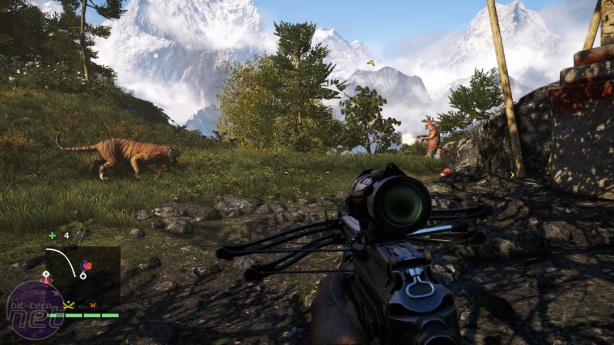
Like the previous entry in the series, Far Cry 4 has a distinctly odd tone to its writing. Perhaps this is inevitable for a game that embraces the absurdity of blowing up a pick-up-truck full of soldiers with an RPG fired from the back of an elephant, while also attempting to tell a story about a civil war. It tries to navigate both the severity and the hilarity of its subject matter, and there are times during the campaign when it pushes too far one way or the other.There are some obvious improvements to the writing over Far Cry 3, though. At no point does it involve spoiled American man-children being utterly awful with every syllable of dialogue that dribbles from their idiot mouths, and it no longer appears to be masquerading under the guise of satire. Nevertheless, it's an odd combination of serious themes and attempts at humour.
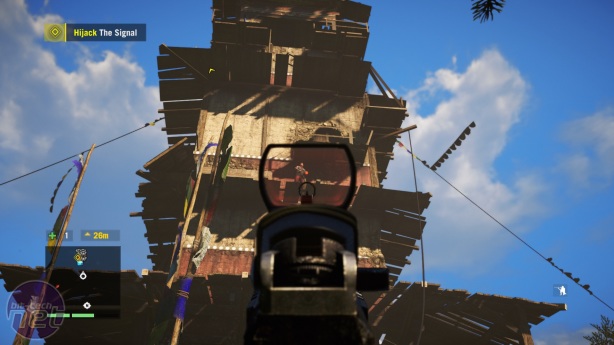
For instance, the campaign revolves around the Golden Path's rebellion, and the leadership squabble between Sabal, the spiritual male leader who sees value in every human life, and Amati, the Path's first woman in charge, for whom the ends always justify the means. Their missions often give you a choice in whose approach to follow. Sabal might want you to destroy a drug manufacturing plant because drugs are bad, while Amati might request you merely take it by force, so the drug money can be used to rebuild Kyrat's ailing economy. So you make this tough moral decision, then you get in the car and the DJ running "Free Kyrati" radio is discussing the same subject matter, while making abysmal fart jokes.
Dragon Age: Inquisition Review
Dragon Age Inquisition is a heck of an apology for Dragon Age II. It's like a neighbour caught letting their dog defecate in your garden making amends by buying you a house. No, make that a range of houses, endlessly, until you're forced to say "For God's sake, please stop buying me houses."Whereas Dragon Age II was small, rushed and repetitive (although saved from total disaster by a wonderful cast of characters). Inquisition is a vast, sprawling, pure fantasy epic, BioWare's grandest creation since their isometric days. It isn't their best, lacking a certain level of refinement to put it up there with Mass Effect 2 and Knights of the Old Republic. Nevertheless, there is an awful lot to celebrate here, so like dogged adventurers approaching the wyrm's glittering horde, we'd best press on.
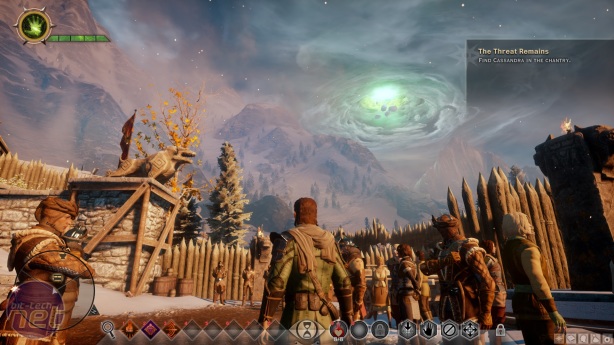
Inquisition begins with an explosion, which is always a good way to get the ball rolling. At a temple known as the Conclave, where a peace summit between an army of rebel mages and the Templar order supposed to control them is being held, a thunderous detonation destroys the entire building, rips a hole in the sky, and causes demons to start dribbling through smaller tears in reality at every corner of the realm. That's why you always switch your cauldron off before you leave the hovel. Your character is the only survivor of the resulting devastation, discovered with a glowing green mark on his hand which, conveniently, makes him the only person capable of closing these rifts. Consequently he becomes first the figurehead and ultimately the leader of the Inquisition, an ancient order rekindled anew for the purpose of sewing the world back together.
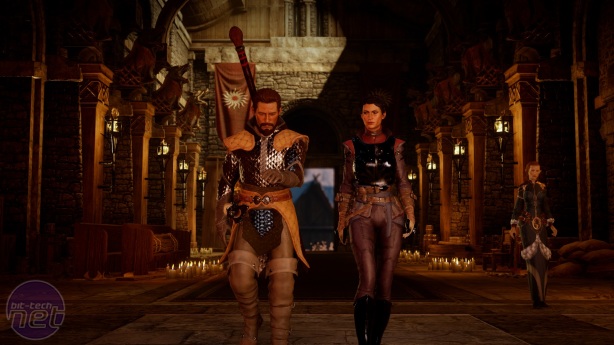
It's a vigorous opening for such a huge RPG, if a somewhat dizzying one. It deals the player an uppercut of lore before escaping with the plot and leaving you struggling to your narrative feet. Alongside the Inquisition, rebels, mages, and another realm filled with demons, there are at least three countries, a half-dozen additional organisations, and goodness knows how many characters who you need to register and understand if you're to stand any chance of comprehending Inquisition's gargantuan fantasy drama.There's a reason why Inquisition moves through these seemingly significant plot points with such relative speed, and once the game reveals its motivation, everything falls into place retroactively. Still, in the moment the pacing feels very strange, and it doesn't help that, when the introductory sequence is over, Inquisition drops you into an enormous starting area and shouts "go explore!" without a great deal of context.
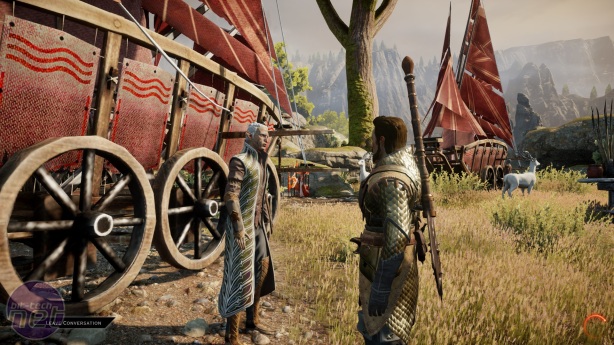
So here's a little context. Inquisition isn't so much the story about you, or about your party, as it is the entire organisation itself. It begins as a disparate bunch individuals thrown together by fate and viewed with suspicion by every other major faction in the world, and gradually gains their allegiance, spreading its influence throughout the realm. BioWare communicate this broader focus in multiple ways. Key characters expand way beyond the party which accompanies you in missions, with several returning from previous Dragon Age games. Your base of operations, high in the Frostback mountains, becomes increasingly busy and visibly more powerful as you recruit more people to your cause. The primary currency of the game isn't coin or experience, but power, which you earn through various means we'll get into shortly. Power is exercised at the war table, the nerve centre of your organisation. Here you converse with advisors, send out spies, diplomats and armies on operations, select which story missions to proceed on, and scout out environments to explore.
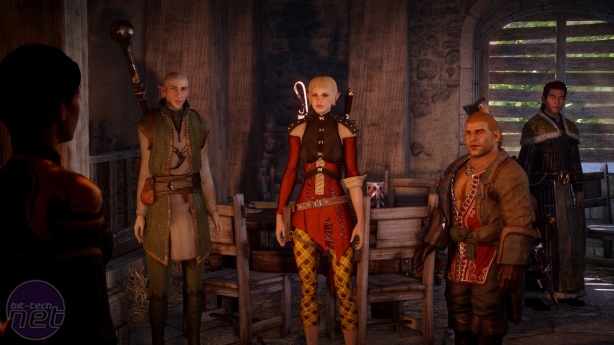
The latter of these is where BioWare's apology for Kirkwall's confines is most evident. Like all BioWare games, exploration involves travelling to specific locations marked on the war map rather than travelling through a seamless open world. Unlike most other BioWare games, these areas are essentially open worlds in and of themselves. The opening area, the Hinterlands, is a huge, rugged landscape of rocky mountains and temperate forests. Exploring it is a delight, until you realise this is only the beginning of what BioWare have to offer. Arid deserts, snowy mountains, rain-lashed coastlines and swamps pummelled by lightning all form part of the Inquisition's plans.
Gearing Up for Esports: World of Tanks Strongholds
Strongholds was introduced to World of Tanks in Update 9.2, and received a major update in 9.4, currently the most recent patch. It's essentially a new game mode designed to encourage team work, socialising and interest in clan wars and esports. Wargaming wants World of Tanks to be in the top five global esports games based on its success; it reached the 100 million registered players mark in August this year, and while many of those are undoubtedly inactive or duplicate accounts, it's still evident that World of Tanks is hugely successful.
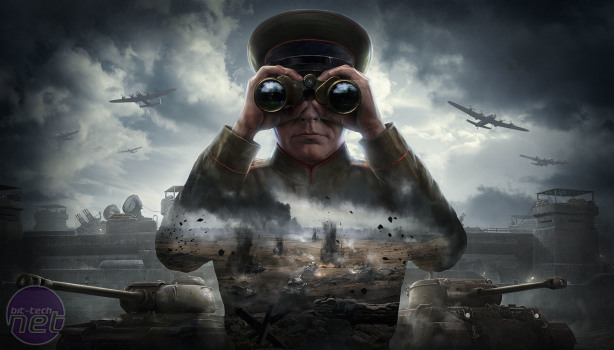 Click to enlarge
Click to enlarge
With Update 9.4 released just under a month ago, experienced and dedicated World of Tanks players will likely be familiar with Strongholds, though some may be yet to try it out. However, its main target is the less experienced and more casual and middle ground players, as it's these people that Wargaming wants to develop an interest in higher level play. Though expanding available game modes is nothing new, especially in the free-to-play market, Strongholds is particularly interesting for its aims and target user base. As such, we feel it warrants a more detailed explanation of how it works and how it hopes to achieve its aims. If you are entirely unfamiliar with Strongholds, this video provides a good overview.Strongholds is available as a new tab in the game client. It's worth pointing out now that Strongholds does not introduce any new payment options – everything within it is free for all players, and there's no way of paying to gain an advantage specifically within Strongholds. Strongholds are effectively virtual bases for clans and their members and are limited to one per clan. Any clan leader (known as a Commander) can create a stronghold for free, though remember it costs 2,500 Gold to create a clan.
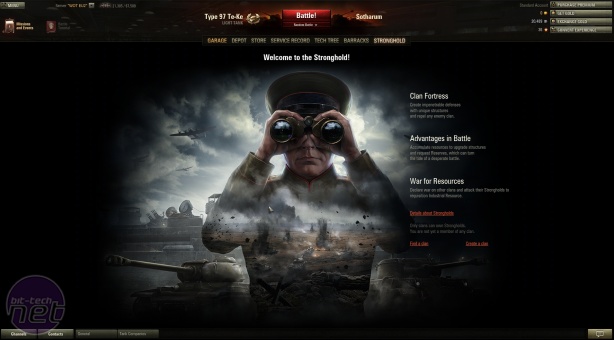 Click to enlarge
Click to enlarge
A stronghold starts out with a single building, the command centre. However, clans can open up to four zones, each of which has two construction sites where you can build a structure. Only the top two clan ranks (Commander and Executive Officer) can open zones and build structures. The first zone can be opened with any number of clan members, while the second requires at least 30, and 15 more per zone needed after that – your stronghold grows as your clan does. The command centre and structures can both be levelled up (maximum level 10 as of Update 9.4), but the level of the command centre determines the maximum level of any auxiliary structures.
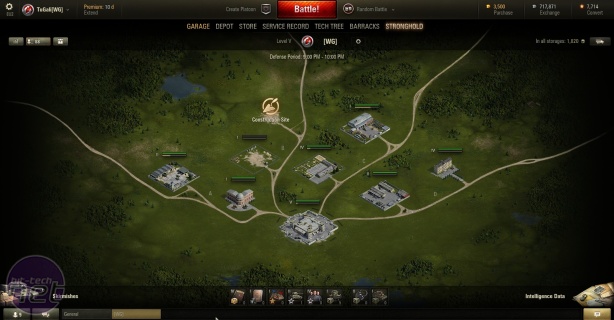 Click to enlarge
Click to enlarge
There are currently eight structure types (more are planned), each of which brings with it certain bonuses, known as reserves, for the clan. There's no benefit to repeating buildings, but smaller clans will need to select the most appropriate buildings for them at the time as they grow – reserves include things like additional credits, crew experience, Combat Experience etc. earned in battles as well as the generation of special missions which reward clan members with various rewards if completed. The effectiveness of reserves increases with the level of the parent structure. Reserves can only be activated one at a time and are time-limited (e.g. 4 hours), but during that time their bonuses apply to all clan members in all battles, including those outside of Strongholds. Reserves are a crucial factor as they generate the main motivation to get involved in Strongholds by providing similar bonuses to those gained with a premium account without the need to spend any real money. It also encourages players to engage with their clan and keep coming back to see when reserves will be active so they can make the most of their play time.
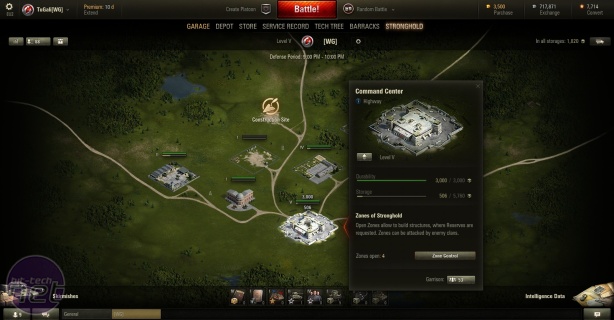 Click to enlarge
Click to enlarge
Strongholds runs on a special currency that is unique to the mode called Industrial Resource. You'll need Industrial Resource to build and upgrade structures as well as to prepare reserves. Preparing a reserve is the only way to make it available for use; you can store up to ten reserves per structure, but it does take time (e.g. 1 hour) to prepare them. To build or upgrade a structure, you'll need enough Industrial Resource to fill its durability bar – only structures with 100 percent durability are active. However, each structure also has a set amount of storage for Industrial Resource, which increases with structure level, and you can transfer Industrial Resource between structures as necessary, though you're limited in how much you can transfer in a single job (this increases with the command centre level). Transporting happens instantly, but you'll need to wait a set length of time (e.g. 23 hours) before you can transport any more Industrial Resource to that structure again. Clearly, Industrial Resource is the lifeblood of a stronghold, and the more you have the better your stronghold will be and the faster it can grow. However, you won't earn any by twiddling your thumbs, nor can Industrial Resource be purchased – the only way to get some is on the battlefield...
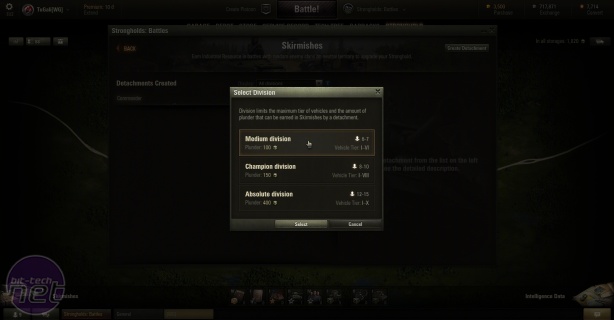 Click to enlarge
Click to enlarge
The first battle type for Strongholds, introduced in 9.2, is Skirmishes, of which there are three divisions: Medium, Champion and Absolute. These are designed to attract different levels of players, so that less accomplished and less experienced players can still contribute to the clan. They are also meant to get players used to working with their clan as a team, so that tactics can be tested and developed without risking anything within the stronghold. The battle rules and objectives are the standard ones: capture the opposing team's base or destroy all their tanks. At the end, a pool of Industrial Resource is distributed between the two teams according to the total Base Experience (XP that excludes additional bonuses from things like premium accounts, mission rewards etc.) that the teams earned.
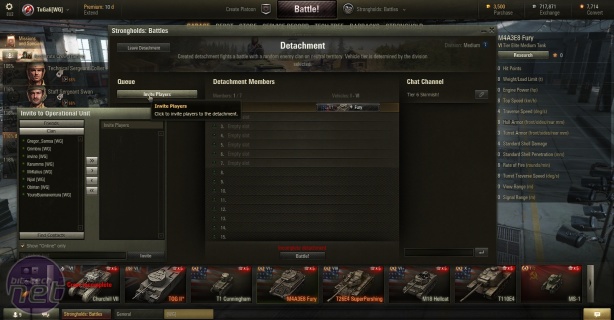 Click to enlarge
Click to enlarge
Medium division permits Tier I-VI tanks in 7 v 7 matches (minimum 6 per team) with an Industrial Resource pool of 100. Champion is for Tier I-VIII in 10 v 10 matches (minimum 8) with a 150 Industrial Resource pool, and Absolute is for all tanks in 15 v 15 (minimum 12) with 400 Industrial Resource at stake. Once the Industrial Resource is distributed to the teams, it is split evenly between the players, and it is then added to the storage of whichever building each player is garrisoned in. Up to five Legionnaires (non-clan members) can also be invited to participate in Skirmishes, but their share of the Industrial Resource will be irretrievably lost. Likewise, if a building's storage is full, any further Industrial Resource earned by garrisoned players will be permanently lost.
Saints Row: Gat out of Hell Review
When the Boss of the Saints is kidnapped by Satan and forced into a shotgun wedding with his demonic daughter Jezebel, Johnny Gat forms a rescue plan; travel to Hell and shoot the Devil in the face. But he won't be working alone. Accompanying him into fiery Damnation is hacking whizz Kinzie Kensington, while Hell's community leaders, including Blackbeard, Vlad the Impaler and Shakespeare (yes, you read that correctly) are more than willing to lend Gat a bullet or two.Gat out of Hell's premise is superb, another dazzlingly daft idea from Volition in their redeemed Saints Row series. The idea of the Saints licking Lucifer on his own turf is deserving of a full sequel, let alone an expansion pack. In fact, I kind of wish that's what Volition had done, because as an expansion Gat out of Hell falls short of its potential.
This isn't to say Gat Out of Hell is a bad expansion pack. You'd have to be mad as Gat himself to believe such an absurdity. It offers a surprisingly large new city to explore that's typically crammed with stuff to do. Its writing is as playfully subversive as anything in the third or fourth game, and Johnny Gat's newly acquired wings are an excellent evolution of Saints Row IV's superpowers. It even has a musical number.The problem is how Gat out of Hell balances many of its features. Almost everything in the game is either reused, underused, or overused. The design of Hell is probably the best example of this. Volition's version of the Christian underworld is basically Steelport again, but broken into pieces, shaken up in a bag and then slathered in orange paint. There's a deliberate lack of environmental consistency. Highways are improbably long, bits of the city float in the sky, and the five districts are arbitrarily separated in their function.
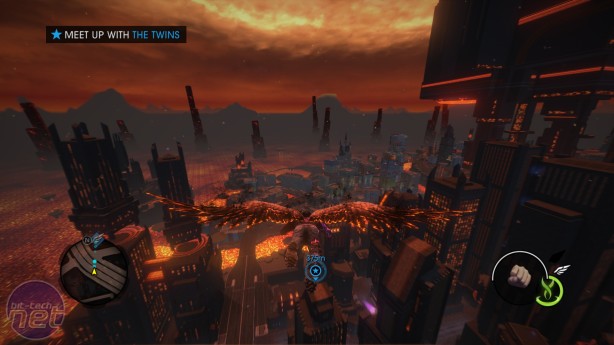
From the air Hell impresses both in its size and its vertical design. The city's skyline is crammed with cranes, skyscrapers and floating platforms, all of which complement zipping about using Johnny Gat's wings. Unfortunately, when you're on the ground Hell is considerably less attractive. The brown/orange colour palette results in an incredibly murky aesthetic, which is the absolute last thing that Saints Row's rather crusty engine needs. Moreover, three of the five city districts - the starting district, the Slums and the Barrens are a wash of crumbling grey buildings or tumbling grey rock. I know it's supposed to be Hell, but I don't think it's actually supposed to torture the player's eyes.
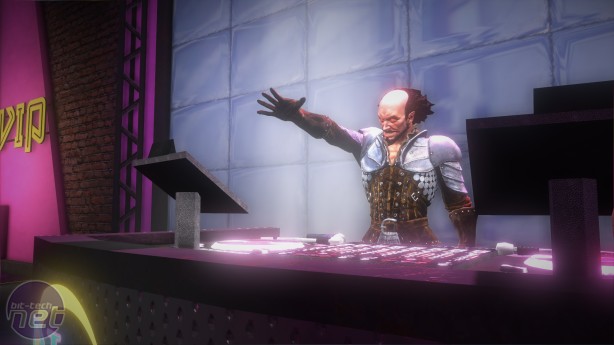
Hell encapsulates both Volition's ambition and the reality of what they can dedicate to achieving it. It's artfully created in some areas, hastily thrown together in others. It also appears to be where the majority of Gat out of Hell's budget went. Other features you'd expect in a Saints Row game are either considerably trimmed down or missing entirely. The fantastic cut-scenes that bookended missions previously are reduced to three or four character exchanges. It's strange to be complaining about the lack of cut-scenes in a game, but Saint's Row actually made them worth watching through its interesting cast of characters and some of the funniest writing in recent years. What's there is on par with the full games, and the aforementioned musical number is possibly the best thing Volition has ever done. Later on, however, when Jezebel breaks into song a second time, Gat abruptly cuts her off, yelling "We're not doing that again!" which is developer-speak for "We wanted to do this again but ran out of money."
Resident Evil HD Remaster Review
Remastering games is a phenomenon that leaves me conflicted. Part of me thinks games should be left to stand in their original form, and developers should instead focus on creating new experiences. Then again, hardware advances so quickly that games can become unworkable on modern machines in as little as ten years. So updating classic titles, ensuring they function and are enjoyable to play on the latest hardware undoubtedly has some moral value. On top of that, I can't deny that it is nice to see certain games given a lick of paint, especially when the game in question has aged particularly badly, or the developers made a special effort in their improvements.
![Resident Evil HD Remaster Review [MONDAY] Resident Evil HD Remaster Review](http://images.bit-tech.net/content_images/2015/01/resident-evil-hd-remaster-review/resi2-614x345.jpg)
But then lies the question; how far should a remaster go? If the developer is charging for the updated version, there's a sense the alterations should be extensive, perhaps going so far as to rebuild the game from its very foundations. But if you do that, is it then the same game? Plus, if you're going to update a game for modern audiences, should those changes be limited to how the game looks? What about outmoded gaming conventions, or problems identified with the game at the time of its original release? Basically, the whole concept kicks off a massive fight inside my skull. My brain is consumed in a cartoonish cloud of dust with fists and boots protruding from it. To be honest, Resident Evil HD Remaster really doesn't help the situation, because it's actually a remaster of a remaster. Nyyyyaaaah. Capcom have taken the 2002 GameCube version of Resident Evil, which was itself a complete graphical restructuring of the 1996 original, and stretched it to fit across your widescreen monitor while avoiding making the pixels so big you could spot them from orbit.
![Resident Evil HD Remaster Review [MONDAY] Resident Evil HD Remaster Review](http://images.bit-tech.net/content_images/2015/01/resident-evil-hd-remaster-review/resi3-614x345.jpg)
So like a developer overhauling a treasured title, let's pull Resident Evil apart and see what works and what doesn't. Essentially, the HD remaster makes tweaks and additions to every element that isn't actual game content. HD resolutions have been added, while the pre-rendered backgrounds have been combined with 3D models and topped with post-process effects. Sound quality has been improved, and a more modern control system has been added alongside the traditional layout.
![Resident Evil HD Remaster Review [MONDAY] Resident Evil HD Remaster Review](http://images.bit-tech.net/content_images/2015/01/resident-evil-hd-remaster-review/resi4-614x345.jpg)
The result is a game that feels almost perfectly at home on a modern PC, although there are a couple of minor flaws. For the most part the backgrounds look crisp and detailed, but there are some areas of the Spencer mansion that needed greater attention than they received. In particular, the second-floor eastern corridor and the underground aqua ring still look fairly grainy. In addition, the new control scheme is designed squarely for gamepads. If you play with a keyboard and mouse, getting your character to walk in a straight line remains a challenge. Oh, and static camera transitions still pose a problem for control consistency, which is a particular nuisance during the small number of timed puzzles.
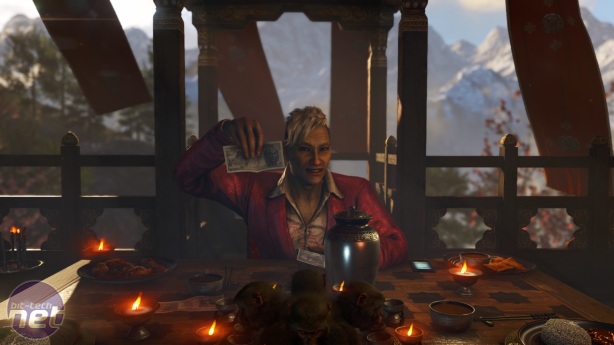

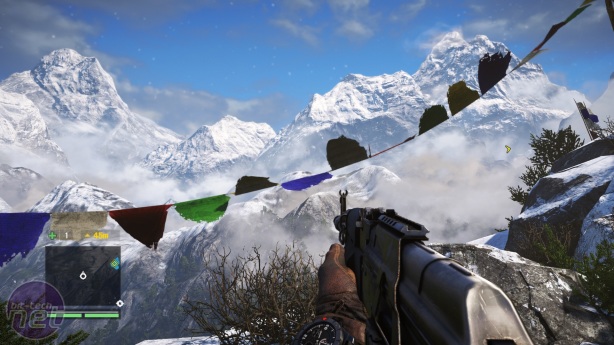


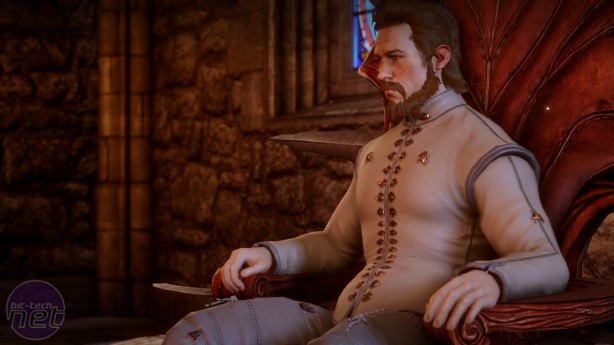










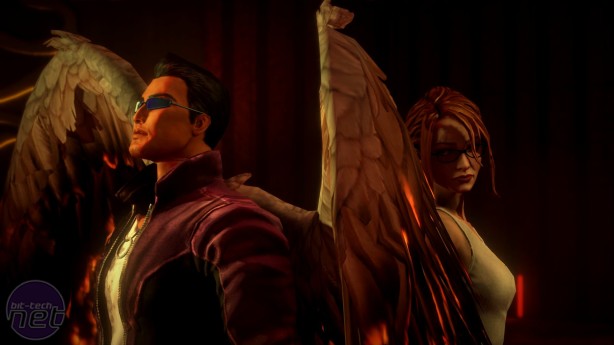
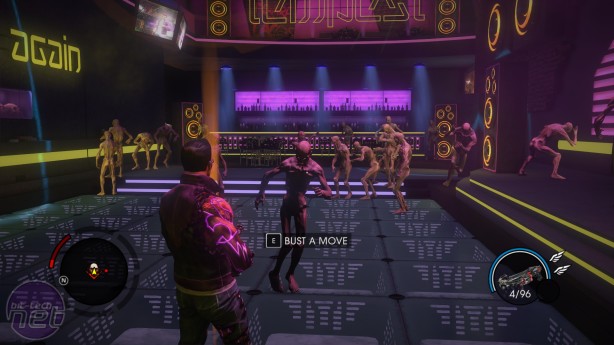


![Resident Evil HD Remaster Review [MONDAY] Resident Evil HD Remaster Review](http://images.bit-tech.net/content_images/2015/01/resident-evil-hd-remaster-review/resi1-614x345.jpg)
![Resident Evil HD Remaster Review [MONDAY] Resident Evil HD Remaster Review](http://images.bit-tech.net/content_images/2015/01/resident-evil-hd-remaster-review/resi2-614x345.jpg)
![Resident Evil HD Remaster Review [MONDAY] Resident Evil HD Remaster Review](http://images.bit-tech.net/content_images/2015/01/resident-evil-hd-remaster-review/resi3-614x345.jpg)
![Resident Evil HD Remaster Review [MONDAY] Resident Evil HD Remaster Review](http://images.bit-tech.net/content_images/2015/01/resident-evil-hd-remaster-review/resi4-614x345.jpg)